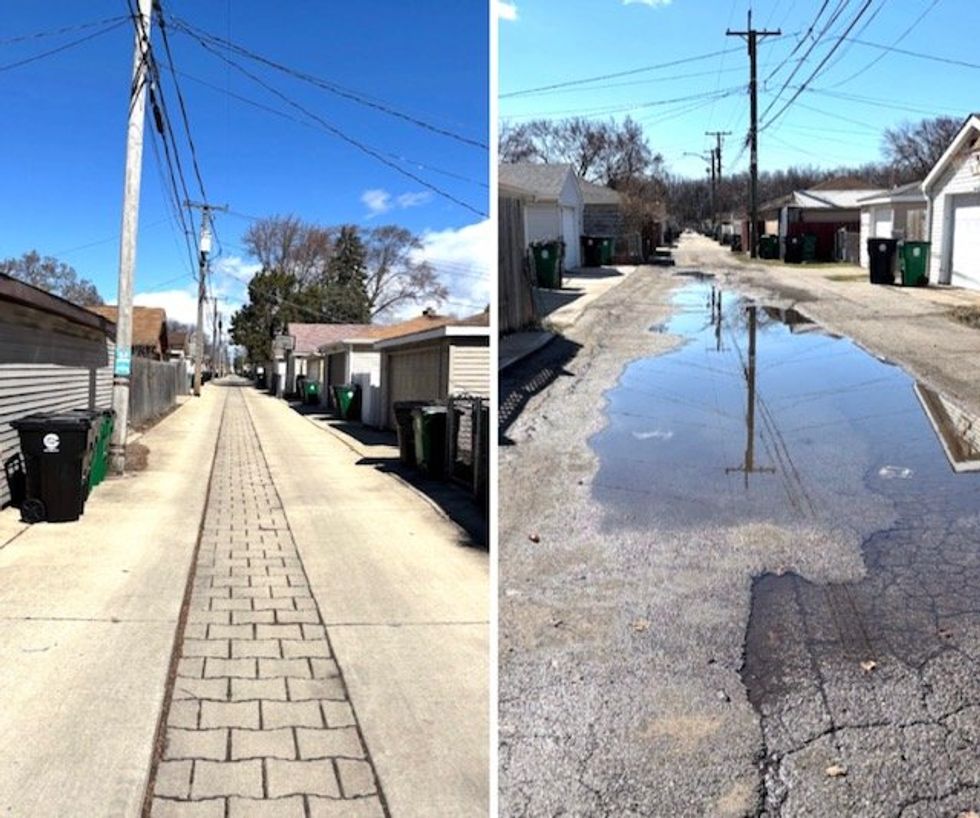Health
Beyond the Game
In the next and final part of the special report, she investigates the many approaches that the city’s local government can take to mitigate urban flooding for its residents, including green alleys. Basements filled with murky storm and sewer water, or back alleys riddled with standing water. These are some of the images that Berwyn’s […]


In the next and final part of the special report, she investigates the many approaches that the city’s local government can take to mitigate urban flooding for its residents, including green alleys.
Basements filled with murky storm and sewer water, or back alleys riddled with standing water. These are some of the images that Berwyn’s urban flooding problem evokes for residents who needto deal with it. What is local government doing to help residents protect their homes from rising waters? And how can residents take control to mitigate damage from excess runoff and sewer backups?
Mitigation efforts and setbacks
As made clear by the 2018 Stormwater Plan, there are many approaches Berwyn’s local government can take to mitigate urban flooding for its residents. One of the effective ones has been green alleys. As opposed to regular alleys, green alleys are built with sustainable materials, such as pervious pavements. Green alleys allow for better stormwater drainage, as standing water is more likely to sink into the permeable ground rather than drain into someone’s basement.
The left is a photo of a green alley located at the 3700 block of Cuyler after heavy rain. The right is a photo of a normal alley at the 3700 block of Lombard after the same rainfall. Credit: Joshua Bowman
While green alleys can improve standing water in Berwyn, and this is something local government is looking to continually implement, they’re expensive and time-consuming to construct.
“Berwyn has 655 alleys,” said Robert Schiller, Berwyn’s Director of Public Works. “Not all of them will qualify for a green alley.”
This is because a green alley can only be implemented somewhere with permeable soil that will allow for water absorption, and it’s up to Schiller and his team to test that. Soil testing isn’t the only hurdle to implementing more green alleys.
“The cost for a green alley is about $360,000, and that’s one 600-foot alley. So, yeah, it’s a very long and slow process going through and applying. You apply for a grant, you get maybe a million dollars or a million three or something to that effect. Then we have our match. So we might get four, maybe five alleys done,” said Schiller, “To have the funding to be able to go through and do all that you need to do would be great, but it’s unrealistic to expect to get, you know, $70, $80, $90 million, $100 million for a community of 57,000 to install green alleys.”
This doesn’t mean green alleys are a dead end; members of local government, such as Alderman-elect Joshua Bowman, are looking to find ways to overcome these challenges, and of course, the MWRD will still work in collaboration with Berwyn to provide funding for these types of projects.
“We consistently and are constantly applying for grant funding for various types of stormwater mitigation,” Schiller confirms.
In the meantime, local government has given agency to the individual homeowner to mitigate flooding in their homes with the Residential Flood Mitigation Shared Cost Program. This program provides a grant to homeowners who wish to install a flood control system – this can come in several forms, such as a backflow prevention device or check valve. The program is designed to reimburse the costs of installation with a city grant that covers up to $3,500.
However, these flood control systems are often much more expensive than a few thousand dollars to install.
“There’s a lot of concern from people that the overall cost is going to be so high that even with the offsetting grant that they can’t absorb the cost,” said South Berwyn resident Karin Nangreave.
Micah Caldwell, Berwyn resident and 1st Ward Alderman, said he spent around $15,000 to install an overhead sewer system, one of the options for homeowners who take advantage of the program.
However, now may be the best time to take advantage of the Shared Cost Program, as the American Rescue Plan has recently dedicated $500,000 to subsidize the program.
This means that, through the Shared Cost Program, a resident can receive an upfront grant of $4,000 to install a flood mitigation device.
“If it’s a backflow prevention device with a sump pump, electric discharge bypass pump, they would get $4,000 credit through the ARPA funds from the grant. And then after that, you take the balance of what’s owed and you get 50% of that up to $3,500 from the city,” said Schiller.
However, city officials understand that, despite these extra funds incentivizing the program, the Flood Mitigation Shared Cost Program may still be too expensive for residents to pursue.
So, where is the middle ground? Something cost-effective and sustainable in the long term.
A green solution: trees and native species
“Trees are the simplest solution, and the cheapest,” said Alicia Ruiz, former 6th Ward Alderman and Aldermanic Co-Chair of the Department of Public Works.
Specifically, the focus is on planting more native species around Berwyn to help mitigate flooding. Even the Environmental Protection Agency (EPA) suggests trees and native species as a viable method to reduce runoff (while also removing harmful pollutants in water at the same time).
This figure shows how an urban tree absorbs water and can impact flooding and water quality. Source: https://host10.viethwebhosting.com/~cwsp/docs/Urban_Tree_Canopy_EP_Report_WQGIT_approved_final.pdf
As per the U.S. Forest Service’s guidance, there are four main ways in which increased canopy can reduce runoff:
“1) Through evapotranspiration, trees draw moisture from the soil ground surface, thereby increasing soil water storage potential. 2) Leaves, branch surfaces, and trunk bark intercept and store rainfall, thereby reducing runoff volumes and delaying the onset of peak flows. 3) Root growth and decomposition increase the capacity and rate of soil infiltration by rainfall and reduce overland flow. 4) Tree canopies reduce soil erosion by diminishing the impact of raindrops on barren surfaces.”
In short, native plants have very deep root systems that permeate the ground and can better absorb rainwater. There are several other benefits to planting native species, including improving air quality, mitigating erosion, and preserving local ecosystems, among others.
In fact, Berwyn resident and founder of Spoke Pockette Farm, Julia Klee, has witnessed the benefits of native species firsthand. Klee noticed a pattern of excess water built up in a cement alley that sits between her and her neighbor’s house.
“When we got a really bad rain,” Klee said, “It almost went into my neighbor’s window.”
In reaction, Klee built a pocket forest in her yard. A pocket forest is a densely planted collection of trees and shrubs; they have a host of benefits, including carbon sequestering and runoff reduction. As it exists now, Klee has around 25 native trees in her forest.
“That’s keeping water out of the alley. Anytime it rains and floods, there’s zero flooding right there.”
Klee now manages her business, Spoke Pockette Farm, and helps her neighbors and clients plant gardens with more native species.
“I want to make sure this is accessible for people,” said Klee. “The cost of labor and just the work of doing the install is prohibitive for a lot of people right now.”
Julia Klee: Working With Space
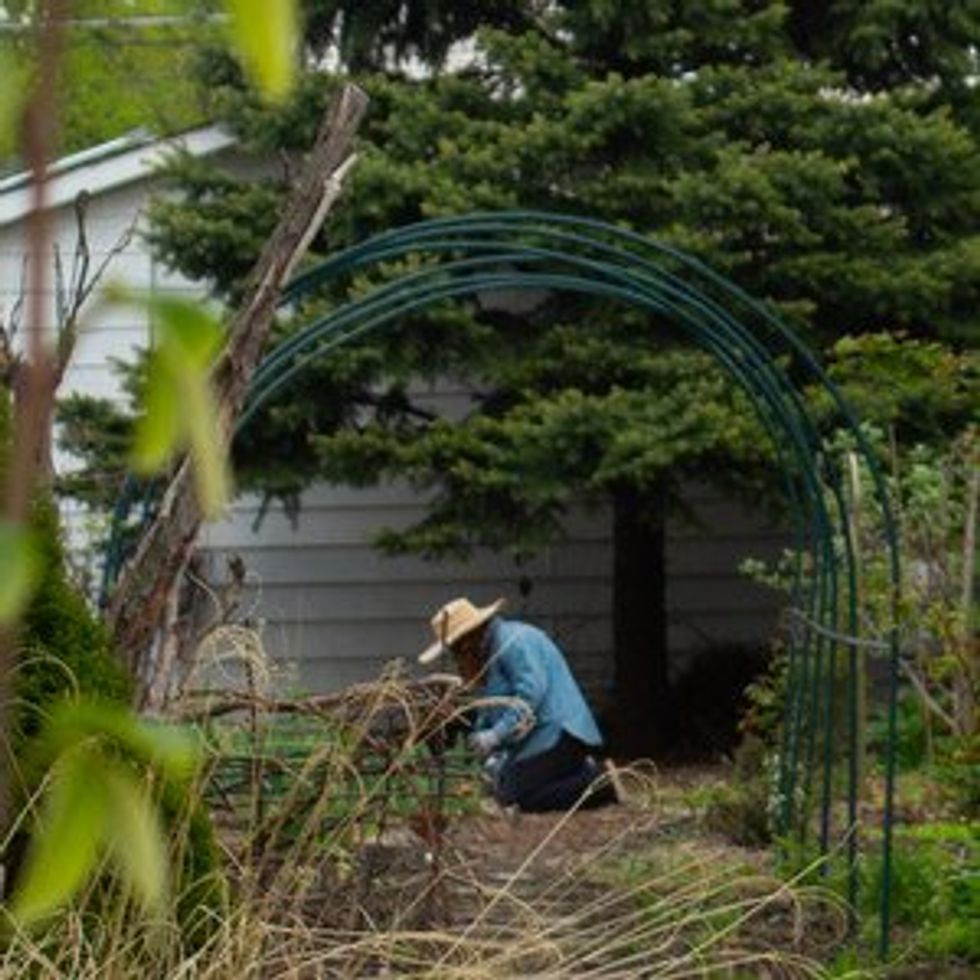 Julia Klee: Working With Spaceopen.spotify.com
Julia Klee: Working With Spaceopen.spotify.com
Affordability is key to successful mitigation plans for urban flooding, especially in areas where green infrastructure is often sacrificed to reduce funding burdens. The Berwyn Tree Canopy Initiative recognizes this and has been encouraging residents to take advantage of Berwyn’s free tree-planting program.
“What we’re trying to do is get the city to plant more trees as part of a flood mitigation strategy,” said McKinley of the BTCI. “They [the city] already have a free tree planting program, but it relies on resident requests, and it’s not advertised terribly well.”
McKinley believes that the City of Berwyn should be more proactive in their native species planting mission, especially where it concerns city-owned land and new construction projects.
In fact, in August 2024, the City of Berwyn and the Township of Berwyn signed an intergovernmental agreement that allocated $75,000 toward the Tree Canopy Restoration Program.
“Should the Program not commence by or before March 31, 2025, the parties (and each of them) shall have the option to immediately terminate this Agreement and withdraw from the Program and this Agreement.”
Robert Schiller clarified that, although the City has yet to receive the $75,000 to begin planting, the agreement remains intact. We reached out to the mayor’s office for comment on numerous occasions, but the only response to date refers [publication] to its flood information page online. Inaction to increase canopy coverage in Berwyn is potentially due to a lack of desire for more trees.
“There is a high percentage of residents in the community that are anti-tree,” said former 6th Ward Alderman Alicia Ruiz.
Schiller attributes some of the anti-tree sentiment to the fear of the large and deep roots that native plants grow. The fear residents maintain, Schiller said, is that these root systems will grow down to the sewer systems looking for a water source, and cause damage to the pipes – an expensive repair.
“Whether they’re on their property, the city’s property, the neighbor’s property, the tree roots will eventually get to those lines. And for those reasons are why some of these people say no, they don’t want a tree in their front yard, in their parkway, any of that.”
These fears are not completely unrealistic. CMAP’s Climate Resilience Program Lead said damage from large root systems happens and is potentially expensive to fix.
“Yeah, there could be some negative tradeoffs. But I think on the whole, trees can reduce flooding to a degree,” said Evasic.
While trees may not prevent major flood disasters such as the one in July 2023, experts agree that their benefits likely outweigh the maintenance costs. Decades-old studies have consistently shown that increasing tree canopy reduces runoff after a storm. A 2014 study conducted in Wilmington, North Carolina, found an 80% reduction in runoff using trees in combination with Silva Cell (a stormwater management deep root system). A similar study in Manchester, UK, found a 58% reduction in runoff during the summer and a 62% reduction in the winter.
The EPA completed 17 studies showing how trees (on a large scale) greatly reduced financial and physical burdens on America’s stormwater systems.
In its report, the EPA cited Minneapolis, Minnesota, as one of its case studies. In 2010, Minneapolis committed to planting 173 trees using a structural cell model, resulting in a 10% reduction in peak flows to the city’s stormwater management system. To this day, Minnesota continues to utilize this model in its construction efforts to support stormwater control and management.
While long-term investments in green-based solutions are largely reliant on local government initiatives, requesting a tree in Berwyn is a small step individuals can take to begin mitigating the risk of floods, especially as the rainy season approaches. This, in tandem with other measures such as disconnecting downspouts and investing in a rain barrel, may hopefully keep Berwyn residents a little safer (and drier) from urban flood and stormwater.
Editor’s Note: This story is made possible through the Berwyn Collaborative: Understanding Community Needs, led by News Ambassadors in collaboration with local news outlets, including Illinois Latino News, click HERE.
Britton Struthers-Lugo is a reporter with the Medill News Service at Northwestern University, a freelance journalist, and a photographer.
The Fulcrum is committed to nurturing the next generation of journalists. To learn about the many NextGen initiatives we are leading, click HERE.
Health
#diastasisrecti
Boissonnault JS, Blaschak MJ. Incidence of diastasis recti abdominis during the childbearing year. Phys Ther. 1988;68(7):1082–6. Article CAS PubMed Google Scholar Mota P, Pascoal AG, Bo K. Diastasis recti abdominis in pregnancy and postpartum period. Risk factors, functional implications and resolution. Curr Womens Health Rev. 2015;11(1):59–67. Article Google Scholar Cardaillac C, Vieillefosse S, Oppenheimer A, […]



Boissonnault JS, Blaschak MJ. Incidence of diastasis recti abdominis during the childbearing year. Phys Ther. 1988;68(7):1082–6.
Mota P, Pascoal AG, Bo K. Diastasis recti abdominis in pregnancy and postpartum period. Risk factors, functional implications and resolution. Curr Womens Health Rev. 2015;11(1):59–67.
Cardaillac C, Vieillefosse S, Oppenheimer A, Joueidi Y, Thubert T, Deffieux X. Diastasis of the rectus abdominis muscles in postpartum: concordance of patient and clinician evaluations, prevalence, associated pelvic floor symptoms and quality of life. Eur J Obstet Gynecol Reprod Biol. 2020;252:228–32.
Sperstad JB, Tennfjord MK, Hilde G, Ellström-Engh M, Bø K. Diastasis recti abdominis during pregnancy and 12 months after childbirth: prevalence, risk factors and report of lumbopelvic pain. Br J Sports Med. 2016;50(17):1092–6.
Fuentes Aparicio L, Rejano-Campo M, Donnelly GM, Vicente-Campos V. Self-reported symptoms in women with diastasis rectus abdominis: A systematic review. J Gynecol Obstet Hum Reprod. 2021;50(7).
Eriksson Crommert M, Petrov Fieril K, Gustavsson C. Women’s experiences of living with increased inter-recti distance after childbirth: an interview study. BMC Womens Health. 2020;20(1):260.
Gluppe S, Ellström Engh M, Bø K. Primiparous women’s knowledge of diastasis recti abdominis, concerns about abdominal appearance, treatments, and perceived abdominal muscle strength 6–8 months postpartum. A cross sectional comparison study. BMC Womens Health. 2022;22(1):428.
Weingerl I, Kozinc Ž, Šarabon N. The effects of Conservative interventions for treating diastasis recti abdominis in postpartum women: a review with Meta-analysis. SN Compr Clin Med. 2022;5(1):10.
Marander V, Råheim M, Haukenes I, Theodorsen NM. Mothers’ experiences living with diastasis recti abdominis– an interview study. BMC Womens Health. 2024;24(1):292.
Lentzen MP, Trojtza S, Zinser M, Kreppel M, Zoeller JE, Zirk M, #facialtraumasurgery. Educational content of Instagram as a social media source for facial trauma surgery. J Craniofac Surg. 2021;32(8):2794–7.
Larsen MK, Thygesen TH. Orthognathic surgery: outcome in a Facebook group. J Craniofac Surg. 2016;27(2):350–5.
Wang Y, McKee M, Torbica A, Stuckler D. Systematic literature review on the spread of Health-related misinformation on social media. Soc Sci Med. 2019;240:112552.
Pace LA, Herbert AS, Malik RD. Characteristics of pelvic organ prolapse content available on social media. Neurourol Urodyn. 2021;40(5):1165–74.
Minaglia S, Kaneshiro B, Soules K, Harvey S, Grzankowski K, Millet L, et al. Assessment of internet-based information regarding pelvic organ prolapse and urinary incontinence. Female Pelvic Med Reconstr Surg. 2012;18(1):50–4.
Dueñas-Garcia OF, Kandadai P, Flynn MK, Patterson D, Saini J, O’Dell K. Patient-focused websites related to stress urinary incontinence and pelvic organ prolapse: a DISCERN quality analysis. Int Urogynecol J. 2015;26(6):875–80.
Brito LGO. Is social media really impacting urogynecology? Int Urogynecol J. 2021;32(2):237–8.
Mazloomdoost D, Kanter G, Chan RC, Deveaneau N, Wyman AM, Von Bargen EC et al. Social networking and Internet use among pelvic floor patients: a multicenter survey. Am J Obstet Gynecol. 2016;215(5):654.e1-654.e10.
Sajadi KP, Goldman HB, Firoozi F. Assessing internet health information on female pelvic floor disorders. J Urol. 2011;186(2):594–6.
Sajadi KP, Goldman HB. Social networks lack useful content for incontinence. Urology. 2011;78(4):764–7.
Dowding D. Best Practices for Mixed Methods Research in the Health Sciences John, Creswell W, Klassen AC. Vicki L. Plano Clark, Katherine Clegg Smith for the Office of Behavioral and Social Sciences Research; Qualitative Methods Overview Jo Moriarty. Qualitative Social Work. 2013;12(4):541–5.
Creswell JW. Qualitative, quantitative, and mixed methods approaches. Research Design Qualitative Quantitative and Mixed Methods Approaches. 4th Edition. Research Design. SAGE Publications Inc.; 2013.
Creswell JW, Plano Clark VL. Designing and Conducting Mixed Methods Research. 2nd Edition. SAGE Publications Inc.; 2011.
O’Cathain A, Murphy E, Nicholl J. The quality of mixed methods studies in health services research. J Health Serv Res Policy. 2008;13(2):92–8.
Giagio S, Rial Rebullido T, Salvioli S, Innocenti T, Pillastrini P, Moore IS et al. Analysis and perception of Instagram posts referring to diastasis recti abdominis, exercise and sports-related content: a mixed-method study protocol. medRxiv [Internet]. 2023;2023.07.05.23292242.
Benjamin DR, van de Water ATM, Peiris CL. Effects of exercise on diastasis of the rectus abdominis muscle in the antenatal and postnatal periods: a systematic review. Physiotherapy. 2014;100(1):1–8.
Benjamin DR, Frawley HC, Shields N, Peiris CL, van de Water ATM, Bruder AM, et al. Conservative interventions May have little effect on reducing diastasis of the rectus abdominis in postnatal women– A systematic review and meta-analysis. Physiotherapy. 2023;119:54–71.
Berg-Poppe P, Hauer M, Jones C, Munger M, Wethor C. Use of exercise in the management of postpartum diastasis recti: A systematic review. J Womens Health Phys Th. 2022;46(1):35–47.
Gluppe SB, Ellström M, Bø K. Curl-up exercises improve abdominal muscle strength without worsening inter-recti distance in women with diastasis recti abdominis postpartum: a randomised controlled trial. J Physiother. 2023;69(3):160–7.
Dufour S, Petrusevski C. Does research support the current Conservative care recommendations for pregnancy-related diastasis rectus abdominis? A scoping review. J Pelvic Obstetric Gynaecol Physiotherapy. 2024;134:13–30.
Skoura A, Billis E, Papanikolaou DT, Xergia S, Tsarbou C, Tsekoura M, et al. Diastasis recti abdominis rehabilitation in the postpartum period: A scoping review of current clinical practice. Int Urogynecol J. 2024;35(3):491–520.
Kimber Ml, Meyer S, Mchugh Tl, Thornton J, Khurana R, Sivak A et al. Health outcomes after pregnancy in elite athletes: A systematic review and Meta-analysis. Med Sci Sports Exerc. 2021;53(8).
Vesting S, Gutke A, Fagevik Olsén M, Rembeck G, Larsson MEH. The impact of exercising on pelvic symptom severity, pelvic floor muscle strength, and diastasis recti abdominis after pregnancy: A longitudinal prospective cohort study. Phys Ther. 2024;104(4):1.
Theodorsen NM, Fersum KV, Moe-Nilssen R, Bo K, Haukenes I. Effect of a specific exercise programme during pregnancy on diastasis recti abdominis: study protocol for a randomised controlled trial. BMJ Open. 2022;12(2):e056558.
Mottola MF, Davenport MH, Ruchat SM, Davies GA, Poitras VJ, Gray CE, et al. 2019 Canadian guideline for physical activity throughout pregnancy. Br J Sports Med. 2018;52(21):1339.
Lee N, Bae YH, Fong SSM, Lee WH. Effects of pilates on inter-recti distance, thickness of rectus abdominis, waist circumference and abdominal muscle endurance in primiparous women. BMC Womens Health. 2023;23(1):626.
Toprak Celenay S, Balaban M, Ozer Kaya D. Immediate effects of corrective exercise versus curl-up in women with diastasis recti abdominis. J Bodyw Mov Ther. 2024;40:1610–4.
Deering RE, Chumanov ES, Stiffler-Joachim MR, et al. Exercise program reduces inter-Recti distance in female runners up to two years postpartum. J Womens Health Phys Th. 2020;44:9–18.
Gluppe S, Engh ME, Bø K. What is the evidence for abdominal and pelvic floor muscle training to treat diastasis recti abdominis postpartum? A systematic review with meta-analysis. Braz J Phys Ther. 2021 Nov-Dec;25(6):664–75.
Robillard JM, Jun JH, Lai JA, Feng TL. The QUEST for quality online health information: validation of a short quantitative tool. BMC Med Inf Decis Mak. 2018;18(1):87.
Palinkas LA, Horwitz SM, Green CA, Wisdom JP, Duan N, Hoagwood K. Purposeful sampling for qualitative data collection and analysis in mixed method implementation research. Adm Policy Ment Health. 2015;42(5):533–44.
Montserrat Rejano-Campo. The Diastasis Rectus Abdominis Questionnaire: development and initial validation of a questionnaire for the evaluation of the symptoms and consequences of diastasis rectus abdominis [Internet]. Mendeley. 2022. Available from: https://data.mendeley.com/datasets/wtj4v5g24n/1
Saunders B, Sim J, Kingstone T, Baker S, Waterfield J, Bartlam B, et al. Saturation in qualitative research: exploring its conceptualization and operationalization. Qual Quant. 2018;52(4):1893–907.
Malterud K. Qualitative research: standards, challenges, and guidelines. Lancet. 2001;358(9280):483–8.
Braun V, Clarke V. Thematic analysis. APA handbook of research methods in psychology, vol 2: research designs: quantitative, qualitative, neuropsychological, and biological. Washington, DC, US: American Psychological Association; 2012. pp. 57–71.
Bradley EH, Curry LA, Devers KJ. Qualitative data analysis for health services research: developing taxonomy, themes, and theory. Health Serv Res. 2007;42(4):1758–72.
Braun V, Clarke V. Using thematic analysis in psychology. Qual Res Psychol. 2006;3(2):77–101.
Norman K, Denzin YSL. The SAGE handbook of qualitative research. Fourth edition. Thousand Oaks: SAGE, [2011] ©2011.
Dufour S, Hondronicols A, Flanigan K. Enhancing pelvic health: optimizing the services provided by primary health care teams in Ontario by integrating physiotherapists. Physiother Can. 2019;71(2):168–75.
Keeler J, Albrecht M, Eberhardt L, Horn L, Donnelly C, Lowe D. Diastasis recti abdominis: A survey of women’s health specialists for current physical therapy clinical practice for postpartum women. J Womens Health Phys Th. 2012;36(3).
Hayman M, Keppel M, Stanton R, Thwaite TL, Alfrey KL, Alley S, et al. A mixed-methods exploration of attitudes towards pregnant Facebook fitness influencers. BMC Public Health. 2023;23(1):569.
Stewart M, Loftus S. Sticks and stones: the impact of Language in musculoskeletal rehabilitation. J Orthop Sports Phys Ther. 2018;48(7):519–22.
Putukian M, Blauwet C, Currie A, Gouttebarge V, McDuff D, Mountjoy ML, et al. Social media impact on athlete mental health: #realitycheck. Br J Sports Med. 2024 Feb;19:bjsports–2023.
Alam R, Biles MJ, Patel HD, Pavlovich CP, Schwen ZR. Longitudinal analysis of YouTube videos discussing post-prostatectomy erectile dysfunction. Urol Oncol. 2023;41(4):e20511–6.
Curtis RG, Prichard I, Gosse G, Stankevicius A, Maher CA. Hashtag fitspiration: credibility screening and content analysis of Instagram fitness accounts. BMC Public Health. 2023;23(1):1–7.
Maia LB, Silva JP, Souza MB, Henschke N, Oliveira VC. Popular videos related to low back pain on youtube™ do not reflect current clinical guidelines: a cross-sectional study. Braz J Phys Ther. 2021;25(6):803–10.
Marocolo M, Meireles A, de Souza HLR, Mota GR, Oranchuk DJ, Arriel RA et al. Is social media spreading misinformation on exercise and health in brazil?? Int J Environ Res Public Health. 2021;18(22).
Chou WYS, Oh A, Klein WMP. Addressing Health-Related misinformation on social media. JAMA. 2018;320(23):2417–8.
Bhatia A, Gaur PS, Zimba O, Chatterjee T, Nikiphorou E, Gupta L. The untapped potential of Instagram to facilitate rheumatology academia. Clin Rheumatol. 2022;41(3):861–7.
Health
Naomi Osaka tired of way media portrays her
Coming off her third-round defeat at Wimbledon, Naomi Osaka didn’t have a lot of good things to say about her performance. The four-time grand slam champion often bears her emotions for all to see and today was no different after going down July 4 to Anastasia Pavlyuchenkova 3-6 6-4 6-4. “I’m just going to be […]

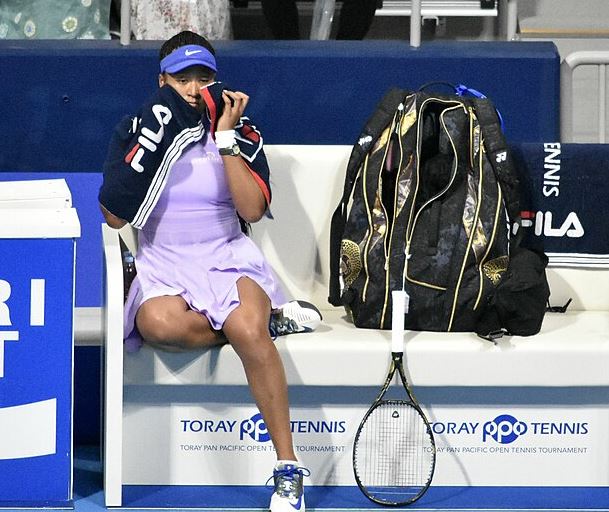

Coming off her third-round defeat at Wimbledon, Naomi Osaka didn’t have a lot of good things to say about her performance.
The four-time grand slam champion often bears her emotions for all to see and today was no different after going down July 4 to Anastasia Pavlyuchenkova 3-6 6-4 6-4.
“I’m just going to be a negative human being today. I’m so sorry. I have nothing positive to say about myself, which is something I’m working on,” she said according to the BBC.
Naomi said she’s trying to work on her outlook but admits it’s a struggle. She hasn’t gotten past the third round of a major tournament since winning the Australian Open in 2021.
However, Osaka cautioned against portraying her as always sad as she accused the media of doing.
“Bro why is it every time I do a press conference after a loss the ESPNs and blogs gotta clip it and put it up. Wtf, why don’t they clip my press conferences after I win? Like why push the narrative that I’m always sad?
“Sure I was disappointed a couple hours ago, now I’m motivated to do better. That’s human emotions. The way they clip me I feel like I should be fake happy all the time,” she said, reported Tennis Infinity.
Sports Illustrated pointed out she isn’t the only tennis player to express negative thoughts after a loss. Coco Gauf, was hard on herself after being bounced from the first round at Wimbledon, Jack Draper nearly came to tears and Alexander Zverev said he felt alone and struggles mentally following his first-round loss.
Osaka hopes to regroup as she heads into the North American leg of the hard court season.
We did it! Thank you for all those who contributed to our June fundraising campaign. We doubled the amount of money raised during the previous year. This money will be used to fund our reporting efforts.
We are published by the non-profit Asian American Media Inc and supported by our readers along with the Robert Wood Johnson Foundation, AARP, Report for America/GroundTruth Project & Koo and Patricia Yuen of the Yuen Foundation.
Find additional content on Bluesky, Facebook, Instagram ,Tiktok, X, and YouTube. Please consider interning, joining our staff, or submitting a story, or making a tax-deductible donation.
You can make your tax-deductible donations here via credit card, debit card, Apple Pay, Google Pay, PayPal and Venmo. Stock donations and donations via DAFs are also welcomed. Contact us at info @ asamnews dot com for more info.
Related
Health
Integrating Acceptance and Commitment Therapy (ACT) with Psychological Skills Training (PST)
ORIGINAL RESEARCH article Front. Psychol. Sec. Sport Psychology Volume 16 – 2025 | doi: 10.3389/fpsyg.2025.1617548 This article is part of the Research TopicMental Health in Recreational and Elite SportsView all 22 articles Provisionally accepted Manchester Metropolitan University, Manchester, United Kingdom The final, formatted version of the article will be published soon. Notify me You have […]
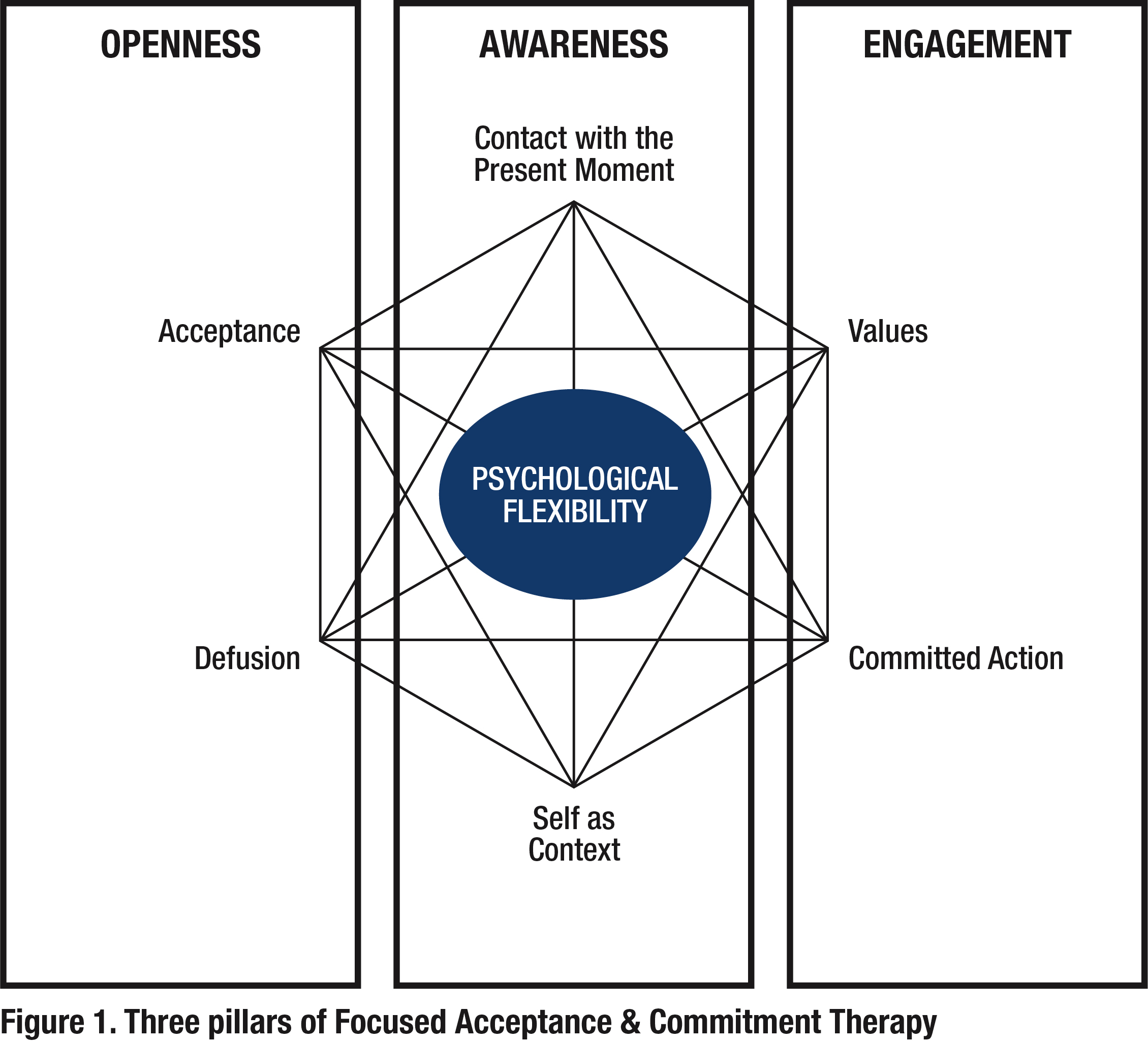
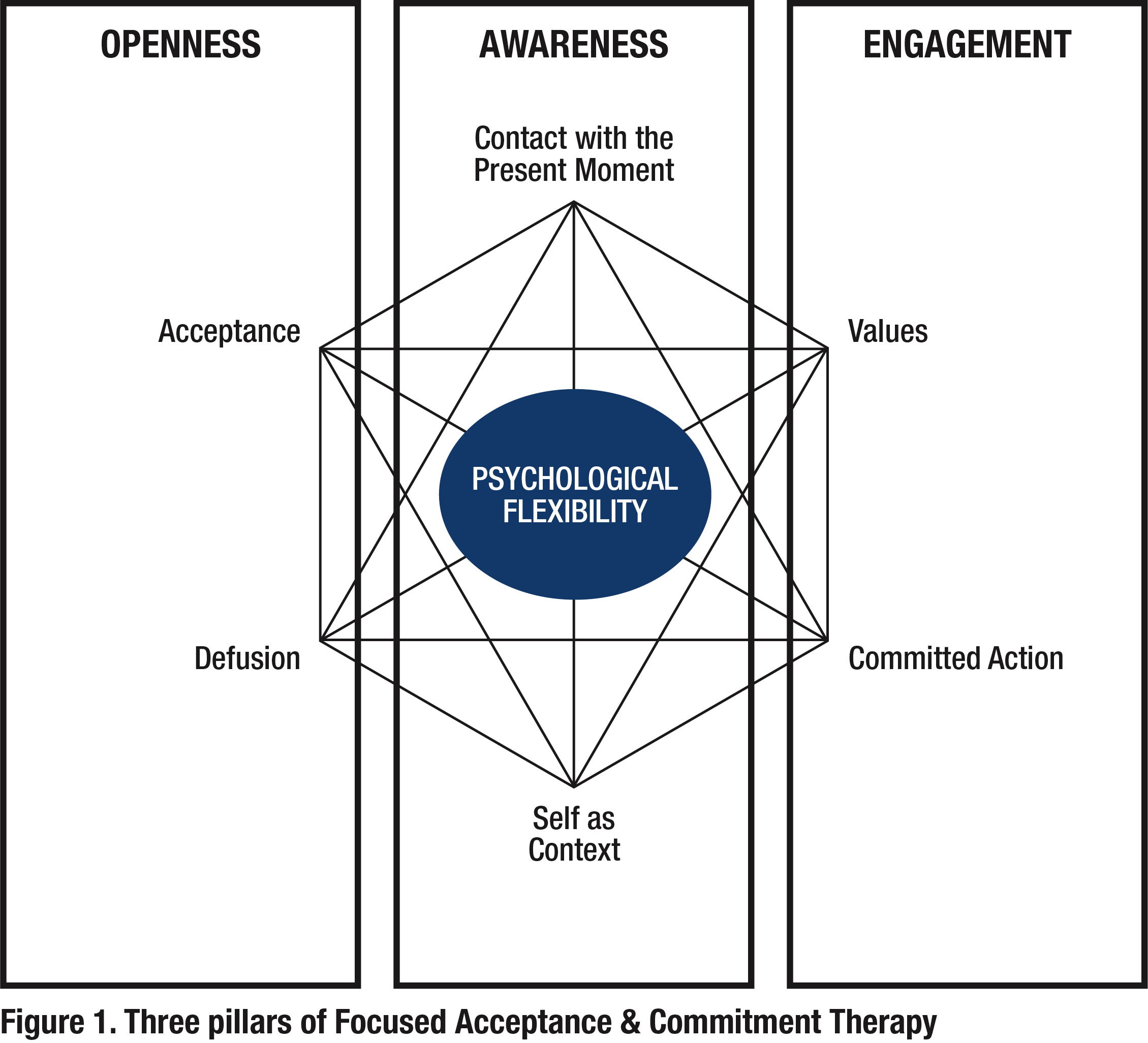

ORIGINAL RESEARCH article
Front. Psychol.
Sec. Sport Psychology
Volume 16 – 2025 | doi: 10.3389/fpsyg.2025.1617548
This article is part of the Research TopicMental Health in Recreational and Elite SportsView all 22 articles
Provisionally accepted
- Manchester Metropolitan University, Manchester, United Kingdom
You have multiple emails registered with Frontiers:
Please enter your email address:
If you already have an account, please login
You don’t have a Frontiers account ? You can register here
This case study outlines the sport psychology service delivery provided to an 11-year-old competitive figure skater. The client reported performance anxiety, which hindered her training and performance at competition. The intervention delivered integrated core processes of Acceptance and Commitment Therapy (ACT) with psychological skills training (PST) with the aim of reducing the client’s performance anxiety. Little has been written about how ACT can be applied alongside PST. The case reports how ACT exercises aimed at defusing the client’s unhelpful cognitions, focusing on valued living, committed action, and staying in the present moment were integrated into goal setting, imagery, performance profiling, and self-talk. Demonstrating the alignment between ACT and PST is crucial for practitioners to seamlessly integrate ACT into their practice. Reflections from the client and practitioner capture the evaluation of the service delivery.
Keywords: cbt, MST, performance, sport psychology, Psychotherapy, Youth
Received: 24 Apr 2025; Accepted: 04 Jul 2025.
Copyright: © 2025 Wood and Turner. This is an open-access article distributed under the terms of the Creative Commons Attribution License (CC BY). The use, distribution or reproduction in other forums is permitted, provided the original author(s) or licensor are credited and that the original publication in this journal is cited, in accordance with accepted academic practice. No use, distribution or reproduction is permitted which does not comply with these terms.
* Correspondence: Samuel Wood, Manchester Metropolitan University, Manchester, United Kingdom
Disclaimer: All claims expressed in this article are solely those of the authors and do not necessarily represent those of their affiliated organizations, or those of the publisher, the editors and the reviewers. Any product that may be evaluated in this article or claim that may be made by its manufacturer is not guaranteed or endorsed by the publisher.
Health
Gambling investigation of Guardians' Luis Ortiz the latest example of how betting is causing …
CLEVELAND, Ohio — Guardians pitcher Luis Ortiz was placed on “non-disciplinary paid leave” on Thursday morning by Major League Baseball as it investigates gambling allegations. And while Ortiz’s case is still under investigation, it is the latest instance of what has become a worrying and increasing trend of pro sports athletes being investigated for gambling. […]


CLEVELAND, Ohio — Guardians pitcher Luis Ortiz was placed on “non-disciplinary paid leave” on Thursday morning by Major League Baseball as it investigates gambling allegations.
And while Ortiz’s case is still under investigation, it is the latest instance of what has become a worrying and increasing trend of pro sports athletes being investigated for gambling.
Sports gambling has become much more part of the mainstream after the Supreme Court in 2018 struck down a federal law prohibiting sports gambling, putting it into the hands of the states.
Most leagues don’t allow players to bet on games in their own leagues, and it’s easy to understand why.
Leagues don’t want the integrity of their games compromised by their athletes betting on their own games, even ones they don’t play in. Players can have inside information that could influence betting lines.
If an athlete bets on games he’s involved in, it could harm integrity more if he tries to influence certain outcomes or stats within the game.
One of the most specific elements of sports betting that comes under this scrutiny is prop betting. A prop bet is simply a bet placed on an outcome within a game such as a certain number of points a basketball player scores or whether a baseball player gets one or more hits in a game.
Possibly the most significant example of a pro athlete being connected to prop betting was former Toronto Raptors forward Jontay Porter. He was banned from the NBA in 2024 for breaking numerous league rules about gambling.
Not only did he himself bet on at least 13 games when he was either with the Raptors or their developmental league affiliate, but he was also found to have intentionally taken himself out of at least one game to influence a betting outcome.
The NBA also found that Porter provided confidential health information about himself prior to a game on March 20, 2024. The league then found a bet of $80,000 placed on Porter to underperform in that game. He played just three minutes in that game. But the bet was frozen because of the unusual activity.
In the case of Ortiz, ESPN’s Jeff Passan reported on Thursday that there were two particular pitches that flagged bets in three states including Ohio. First pitches can be bet on, which are called microbets.
Gambling and betting in pro sports hasn’t been limited to the last seven years. The two most significant instances of pro athletes being busted for illegal gambling activities came from MLB when the 1919 Chicago White Sox threw the World Series and Reds great Pete Rose was confirmed to have bet on games he played in. The MLB issued lifetime bans to eight members of the 1919 White Sox, including Shoeless Joe Jackson, and to Rose in 1989, although both Rose and Jackson were among those reinstated in May of 2025.
With gambling being more mainstream, there have been plenty of instances in the past few years of athletes being investigated and disciplined.
NBA
In addition to being banned for life from the NBA, Porter pled guilty to conspiracy to commit wire fraud in federal court in July 2024 and awaits sentencing, which has been pushed back until Dec. 10.
Porter’s case is the most egregious in recent years. But he’s not the only NBA player who has had gambling accusations.
Pistons guard Malik Beasley is currently under federal investigation on allegations related to betting on NBA games and prop bets.
NFL
NFL receiver Calvin Ridley was suspended for the 2022 season for betting on games when he was on mental health leave the year prior.
In 2023, five NFL players including Lions wide receiver Jameson Williams were suspended for violating the league’s gambling protocols. Three received indefinite bans for betting on NFL games while two, including Williams, were suspended for six for mobile betting at the Lions’ team facility, which violates league rules.
NHL
In the NHL, Ottawa Senators center Shane Pinto received a 41-game suspension in 2023 for gambling violations, although the NHL did not find evidence of Pinto betting on NHL games.
MLB
On June 4, 2024, MLB issued a lifetime ban, the first since Rose in 1989, to former Pirates and Padres infielder Tucupita Marcano after he was determined to have placed nearly 400 baseball bets in a two-year span, including 25 on Pirates games in which he was on the roster. He was the first active player to receive a lifetime ban from MLB since Jimmy O’Connell in 1924.
So while Ortiz’s saga is only in its beginning stages, he is the latest example of athletes in professional sports being investigated for betting while playing. However, trends suggest he might not be the last.
In February 2025, the International Betting Integrity Association, which is a non-profit organization with a goal to protect betting integrity, released a report saying that it had received 219 alerts of suspicious betting, an increase of 17% from the year prior. 10 of those alerts came from the U.S., with five involving basketball and five for tennis.
Some states have tried to limit this trend by going after prop betting, particularly outside the pro game.
In 2024, the Ohio Casino Control Commission banned prop bets on college athletics in the state. Many other states including Arizona, Florida, Louisiana and Massachusetts also don’t allow prop bets for in-state college athletics.
Other states like Illinois, New York and Virginia have gone a step further and won’t allow any bets involving in-state schools.
NCAA president Charlie Baker spoke at a Senate Judiciary Committee hearing in December 2024 and said he wants prop bets banned in all college sports across the country.
“We believe that when bettors can’t gamble on college athletes’ individual performances, they’re far less likely to attempt to scrutinize, coerce or harass student-athletes,” Baker told the committee per NPR’s Becky Sullivan. “They get demands for money from unhappy bettors for trivial things that don’t impact the result on the field.
“Many have received death threats from bettors, and they also receive other, in-person threats and accusations directed at them while they’re leaving or coming onto the field of play.”
With the growth of sports betting, the problem of pro athletes being investigated for gambling is not likely to go away. Ortiz wasn’t the first athlete to be investigated for gambling and he most likely won’t be the last.
If you purchase a product or register for an account through a link on our site, we may receive compensation. By using this site, you consent to our User Agreement and agree that your clicks, interactions, and personal information may be collected, recorded, and/or stored by us and social media and other third-party partners in accordance with our Privacy Policy.
Health
Keeping Baseball Players' Minds In Shape; Battle Over Bacon
Summer is the heart of the baseball season. But recently the country’s oldest professional sport has been going through some changes. It’s not just the moves to speed up the pace of play. These days, along with training in the weight room or the bullpen, players are also spending time with their team’s sports psychologist. […]


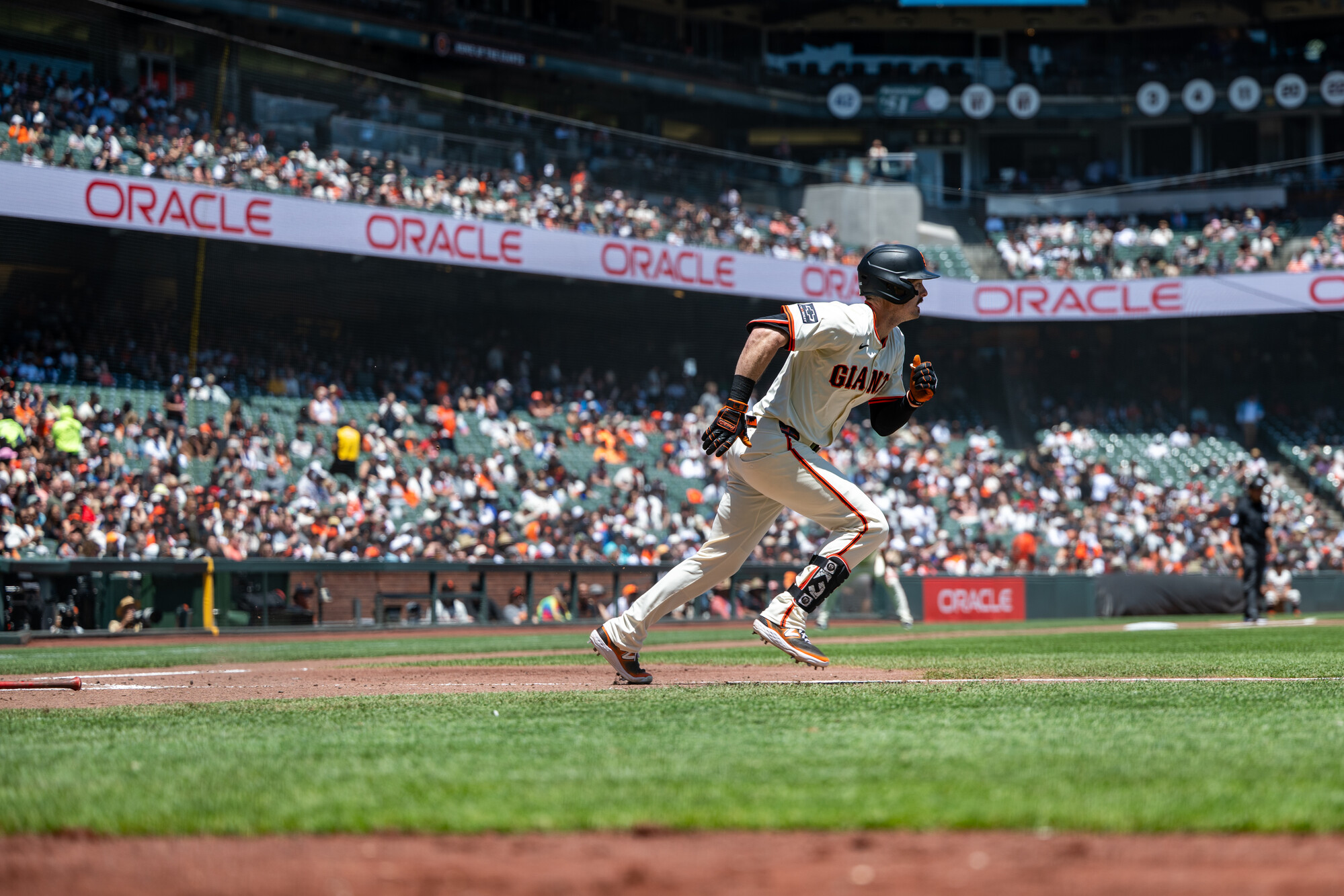
Summer is the heart of the baseball season. But recently the country’s oldest professional sport has been going through some changes. It’s not just the moves to speed up the pace of play. These days, along with training in the weight room or the bullpen, players are also spending time with their team’s sports psychologist. KQED’s health correspondent April Dembosky goes behind the scenes at the San Francisco Giants’ ballpark to understand how the team keeps an athlete’s mind in shape, both on and off the field.
Health
How volleyball helped UC Irvine's Ofure Iselen step into her confidence
Story Links (This story was originally published on ucirvinesports.com) Journeys. Whether it be starting school or a new hobby, everyone in life goes through them – and the ups and downs that come along the way. The thing about journeys is they feel long while they’re happening but when you look back, it really went by […]
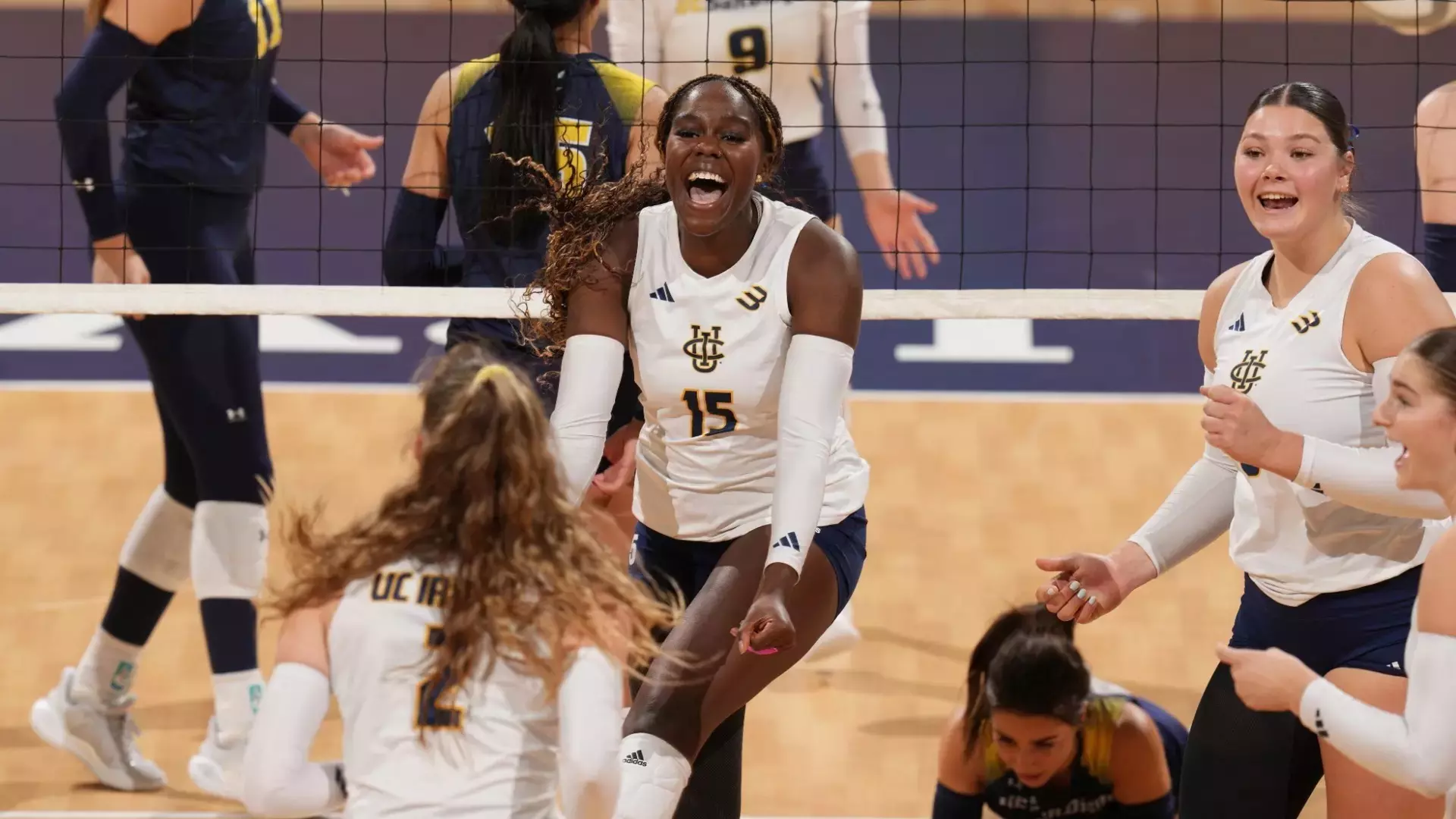

(This story was originally published on ucirvinesports.com)
Journeys. Whether it be starting school or a new hobby, everyone in life goes through them – and the ups and downs that come along the way.
The thing about journeys is they feel long while they’re happening but when you look back, it really went by in a flash. Only when you take a step back and look at your journey can you see the highs and lows and realize how it was all worth it. This is how senior Ofure Iselen would describe her time at UC Irvine as a member of the women’s volleyball team: a journey.
“I would describe it as a journey. I know it’s cliche, but it flew by so fast. I can’t even wrap my head around that it’s done. I would just describe it as a roller coaster. There were the highest of highs and there were the lowest of the lows.”
Iselen’s volleyball career had an unexpected starting point. As her mom wanted her and her siblings to stay active, she was involved with multiple sports growing up. However, it was actually her friend who convinced her to try out for a volleyball team.
“Once I got to middle school, I made my friend try out for the basketball team and then she made me try out for the volleyball team. So, I was just playing middle school volleyball, nothing serious. Then once I got to high school, my mom was like, okay, you have to pick one to really get serious about.”
Since the volleyball season started in the fall before basketball, Iselen’s high school athletic career began with spikes instead of layups, and the rest is history. She made varsity her freshman year and enjoyed the experience. She had found her sport of choice.
Having only started playing competitive volleyball her freshman year of high school, Iselen had some catching up to do, but that didn’t stop others from recognizing her potential. During her high school season, a club director approached her and asked about joining their club volleyball team. Iselen was immediately interested as it would help her grow and they saw potential in her ability to play at the collegiate level.
Iselen put in the work and eventually schools started calling. When it came time to commit, UC Irvine felt like the right fit.
“I had heard of UC Irvine. Some of my friends’ older siblings went there so I was familiar with the school. It was really pretty, and it was not too far from home (the Bay Area). Also, UCI is a really well-known school and that degree holds a lot of weight, so I felt I was getting the best of both worlds. I would get to live out my dreams of playing Division I volleyball while also getting a degree that could push me further after I’m done with volleyball.”
Her freshman season was all about learning and adjusting to the college life. At the advice of her coaches, and coming off an early injury, she focused her efforts in the weight room and learning the ins-and-outs of being a Division I student-athlete.
“My freshman year, I didn’t have many expectations. Coach Ashlie (Hain) told me when I first came in to get serious in that weight room because it would help me a ton. I took that to heart, and I made sure that the weight room was my best friend. Being in the weight room seriously and trying to find that [improvement], and then senior year breaking into that starting lineup was huge for me. It felt like my whole journey kind of meant something and all my hard work didn’t go to waste. I was happy the way we ended, and I couldn’t have asked for a better senior season.”

Iselen bided her time and put in the work to continually improve. She played sparingly her first two seasons with her playing time increasing her junior year, but it wasn’t until her senior season when she earned the opportunity to be in the starting lineup. That doesn’t mean there weren’t still a few bumps along the way in her journey. While she began the season in the starting lineup, by the end of the second preseason tournament, Iselen found herself back on the bench. It was a mental battle as this was her senior year and there was no next season.
“It was probably the biggest challenge mentally and emotionally that I had to face because before it was always like you have next year to try again or get better, but getting benched during preseason of my senior year, I was like there is no next year, right? It was more of a mental challenge than it was a physical challenge because I felt like I was there physically, but mentally I couldn’t perform. I’ve never had to deal with my mental health throughout sports. I was always a pretty positive person. So, when my mental wasn’t there, it’s like, how do you get back to believing in yourself? How do you get back to who you are as a person and as a player?”
Still, Iselen persevered and found her way back into the lineup during the beginning of conference play. From there, she continued to play well, helping lead the Anteaters to a winning record, the program’s first season sweep of Hawai’i and an appearance in the Big West Championships. She ended her senior season ranked first in the Big West in blocks per set (1.24), while averaging 1.21 kills per set and making the Big West Fall All-Academic team.
Iselen looks back on her career fondly and will always cherish the people she met and memories she made with UCI volleyball.
“I’ve met so many amazing people at UCI that I know I’m going to have in my life forever. I never understood when people said that when they come to college, they find their forever people, but I truly did. I’m so appreciative for this school. When I was a kid out of high school, Coach Ashlie took a chance on me because I had only been playing for a few years and I’m so grateful that I was given the opportunity to showcase who I am, not just as an athlete, but as a person too.”
Off the court, Iselen spent a large amount of time with the Student-Athlete Advisory Committee (SAAC) and helped found the Black Student Athlete Alliance (BSAA) at UCI. With her involvement in these organizations and her experience as a student-athlete, a new position opened up that allowed Iselen to remain with UCI Athletics.
After graduating earlier this year with a degree in Political Science (she will walk this weekend), Iselen has served as the Student Athlete Development Coordinator the past two quarters. Her experience and relationships she built at UCI has helped her understand the needs of student-athletes and to plan events and workshops that cater to their interests.
“I work a lot with career development. Having former collegiate athletes come back, from all different sports and schools, and just kind of talk to our student athletes about life after sport and helping them with that transition.
“I feel like I have a unique experience because I’m still in it. A lot of my friends are still student-athletes. I just take their feedback of the things that they feel we’re lacking, and I have the ability to bring those things to life.”
After graduation, Iselen plans to take a gap year and then pursue her MBA. Her plan to become a marketing executive hasn’t changed.
“Coming back from the Black Student Athlete Summit (in 2023), and talking to different marketing executives there made me realize that is what I want to do, so I’ve just been growing in that area too.”
Iselen’s time at UCI wasn’t necessarily a typical one, coming in after COVID, getting a late start in the sport to becoming a key starter as a senior, to continuing to assist student-athletes after her athletic career ended, she always sees the growth in her opportunities and her work. While her journey at UC Irvine has come to a close, her next journey is just getting started. Iselen has no regrets and will forever cherish being an Anteater.
“Just going through this journey – this was such a unique experience that I was gracious to have. Going on the journey alongside people you build a bond with can’t be replaced, they’ve seen you when you were at your lowest and they were the ones that picked you up and carried you through. This is something that you definitely can’t do alone. Finding that community and finding those people who I was able to lean on when I needed to, and then, when it was their turn, for me to be there for them. You create that bond that just lasts for a long time, and I feel like that’s the thing that I probably take away the most is those relationships. I’ve definitely grown and changed a lot since my freshman year. Looking back and seeing videos of myself from four years ago, I’m like, wow, this person has come a long way.”

-

 College Sports1 week ago
College Sports1 week agoWAC to Rebrand to UAC, Add Five New Members in 2026
-

 Technology3 weeks ago
Technology3 weeks agoPolar is teasing a Whoop alternative without subscription
-

 Motorsports5 days ago
Motorsports5 days agoWhy Cosmetics are Making Up for Lost Time in Women’s Sports
-

 Technology3 weeks ago
Technology3 weeks agoI loved the Whoop MG, but didn’t love the price: that’s why I’m excited about this mysterious new fitness band from a major Garmin rival
-

 NIL3 weeks ago
NIL3 weeks agoGo Straight to Collective Bargaining (Part II) ✦ OnLabor
-

 Professional Sports2 weeks ago
Professional Sports2 weeks agoAlex Pereira responds to rumors of UFC heavyweight title fight with threatening message
-

 College Sports3 weeks ago
College Sports3 weeks agoLocked On Women's Basketball
-
College Sports2 weeks ago
Women's Basketball Thanks Shannon LeBeauf for 14 Seasons
-

 Technology1 week ago
Technology1 week agoPet fitness and wellness trends for a healthier and happier dog
-

 College Sports2 weeks ago
College Sports2 weeks agoAlabama Basketball

